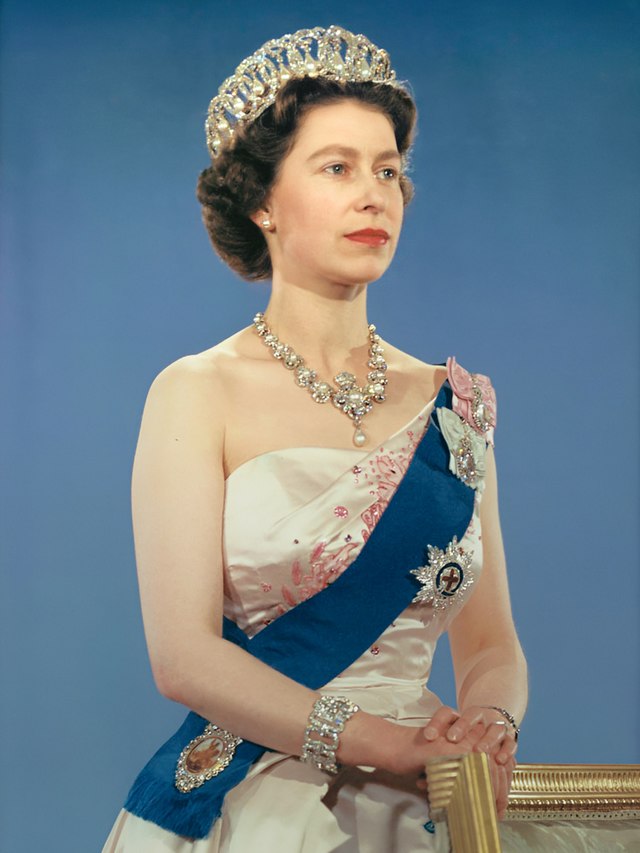Loading AI tools
Japanese order From Wikipedia, the free encyclopedia
The Supreme Order of the Chrysanthemum (大勲位菊花章, Dai-kun'i kikka-shō) is Japan's highest order. The Grand Cordon of the Order was established in 1876 by Emperor Meiji of Japan; the Collar of the Order was added on 4 January 1888. Unlike its European counterparts, the order may be conferred posthumously.
| Supreme Order of the Chrysanthemum 大勲位菊花章 Dai-kun'i kikka-shō | |
|---|---|
 Grand Cordon of the Supreme Order of the Chrysanthemum | |
| Awarded by the Emperor of Japan | |
| Country | |
| Awarded for | Exceptionally meritorious achievement/service |
| Status | Currently constituted |
| Founder | 27 December 1876 |
| Sovereign | HM The Emperor |
| Grades | Collar Grand Cordon |
| Precedence | |
| Next (higher) | None (highest) |
| Next (lower) | Order of the Paulownia Flowers |
Ribbon of the Order | |
Apart from the Imperial Family, only seven Japanese citizens have ever been decorated with the collar in their lifetimes; the last such award was to former Prime Minister Saionji Kinmochi in 1928. Eight others have been posthumously decorated with the collar; the last such award was to former Prime Minister Shinzo Abe in 2022.[1] Today, only the reigning Emperor holds this dignity as sovereign of the order; however, exceptions are made for foreign heads of state, who can be awarded the collar in friendship.
The grand cordon is the highest possible honour a Japanese citizen can be awarded during his or her lifetime. Aside from members of the Imperial Family, 53 Japanese citizens have been decorated with the grand cordon; of these, only 23 were living at the time of receipt.
The collar of the order is made of gold, and features the kanji for "Meiji", in classic form, indicating the era of the order's establishment. It is decorated with gold chrysanthemum blossoms and green-enameled leaves.
The sash of the grand cordon of the order is red with dark blue border stripes. It is worn on the right shoulder.
The star of the order is similar to the badge, but in silver, without the chrysanthemum suspension, and with an eight-pointed gilt medallion (with white-enameled rays and red-enameled sun disc) placed at the center. It is worn on the left chest.
The badge of the order is a four-pointed gilt badge with white-enameled rays; the center bears a red enameled sun disc. On each of the four corners of the badge is a yellow-enameled chrysanthemum blossom with green-enameled chrysanthemum leaves. The badge is suspended on a yellow-enameled chrysanthemum, either on the collar or on the grand cordon.
| Name and image | Enactment date | Purpose of the award |
|---|---|---|
| 大勲位菊花章頸飾 Collar of the Supreme Order of the Chrysanthemum  |
4 January 1888 | It is said to be "a special gift for those decorated with the Supreme Order."[2][a] |
| 大勲位菊花大綬章 Grand Cordon of the Supreme Order of the Chrysanthemum  badge (top), star (bottom right), rosette (bottom left) |
27 December 1876 | "Specially awarded... to those who have excellent merit, above the merit for which the Grand Cordon of the Order of the Rising Sun or the Grand Cordon of the Order of the Sacred Treasures would be awarded".[3] |
| 大勲位菊花章 Supreme Order of the Chrysanthemum  |
27 December 1876 | It has never been awarded on its own, instead it has been treated as the star of the Grand Cordon and of the Collar;
officially incorporated as the star of both grades in the 2003 institutional reform. |



This section needs additional citations for verification. (August 2023) |



Seamless Wikipedia browsing. On steroids.
Every time you click a link to Wikipedia, Wiktionary or Wikiquote in your browser's search results, it will show the modern Wikiwand interface.
Wikiwand extension is a five stars, simple, with minimum permission required to keep your browsing private, safe and transparent.